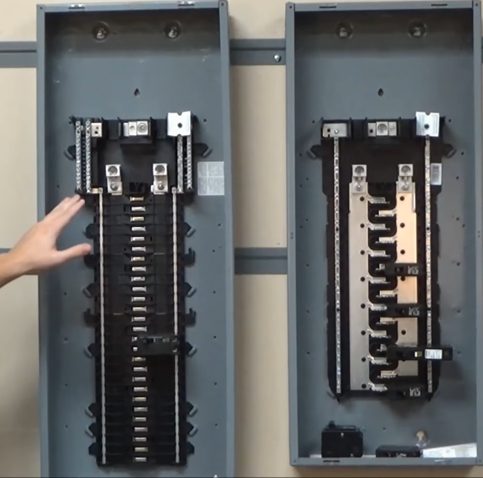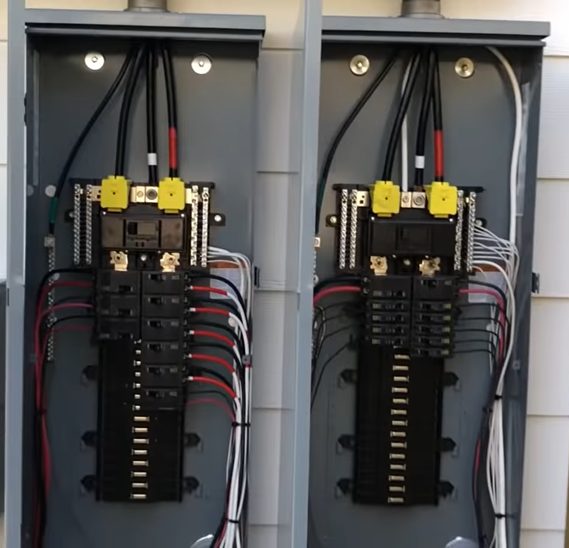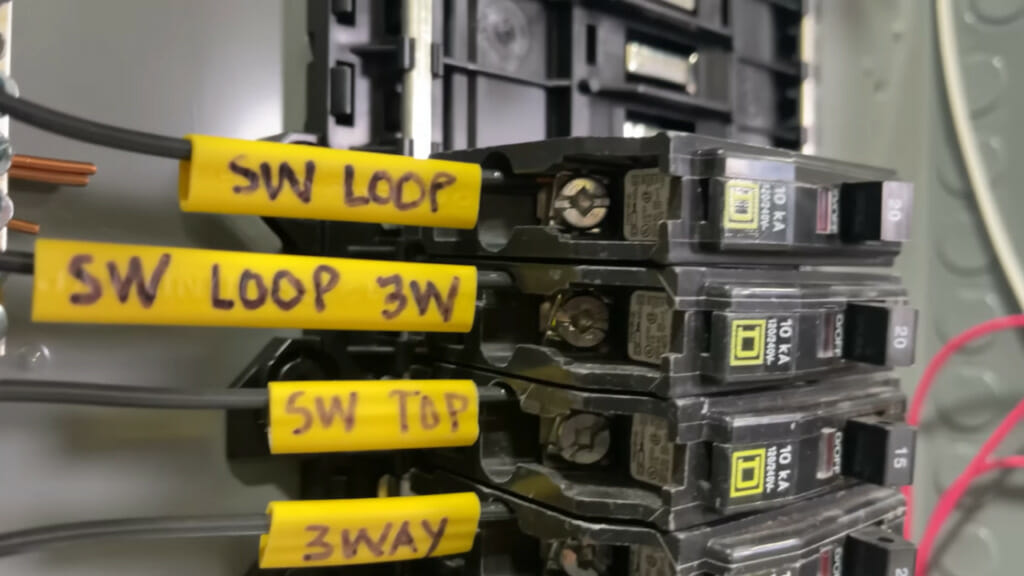What Does 40 Space 80 Circuit Mean?

The phrase “40-space-80-circuit” refers to the number of spaces/slots and individual circuits a panel can handle, respectively. Three different panel ratings exist, each with its number of spaces and individual circuits: “30-60” and “12-24”.
I’ll go into more detail below.
What is a Panel Rating?

Panels are what we call circuit breaker boxes or circuit breaker load centers.
The load center’s parts are rated in output watts, which results from the multiplication of the peak power voltage with the peak power amperage of the panel. The panel load is the total amount of current that a single electrical panel can draw. It is normally measured in amperes.
Electrical load centers have a specific amount of circuit breakers. They, in turn, are connected to several circuits. Some circuit breakers can be assigned to a single circuit, and others can connect to multiple circuits.
A single circuit can be a dedicated circuit. It is used mostly for air conditioning, refrigeration equipment, etc.
What Does 40 Space 80 Circuit Mean?

The point of the phrase is to define the main parts of the main breaker load center.
That means that the first number in the phrase relates to the number of circuit breakers a panel can accept. The second number concerns the number of circuits the whole panel can power.
The manufacturers use the phrase to help electricians understand the limitations of a circuit breaker load center. However, a panel rating must be lower than its capacity to prevent electrical or fire hazards.
Thus, the limit for a 40-space-80-circuit panel to handle is 40 circuit breakers, each connected to 2 circuits (because 80/40=2).
What are the Variations of the Phrase?

There are three different variations of the “40-space-80-circuit panel” phrase.
- The 40-space-80-circuit panel tolerates up to 200 amps.
- The 30-space-60-circuit panel tolerates up to 150 amps.
- The 12-space-24-circuit panel tolerates up to 100 amps.
The above limitations were declared by the National Electric Code (NEC).
Suppose a manufacturer decided to build a panel that can hold up to 50 circuit breakers and 100 circuits. These limitations dictate that it could not be used even if the circuit breaker load center worked perfectly. That is because the number of circuit breakers and circuits in the panel should not exceed the maximum limit (40 and 80 circuits) of the National Electric Code (NEC) ruling.
Thus, the above variations were strict regulations for any panel design.
Is it Still in Use?
The National Electric Code (NEC) followed this type of regulation up until 2008.
Nowadays, the above rule is no longer in use. The number of circuit breakers and circuits depends on the manufacturer’s directions.
That happened because of technological advancements. Different circuits were designed for varying purposes and needs. That is why each manufacturer can now propose limitations based on the function of each panel and the needs it fulfills.
The new regulation is described in Article 408.54 of the National Electric Code (NEC).
Wrapping Up
Many professions use slang to describe the items they use quickly.
The “40-space-80-circuit panel” phrase describes that in the main breaker load center, the maximum number of circuit breakers that can be used is 40, each connecting to 2 circuits, giving 80 circuits total.
That regulation was asserted by the National Electric Code (NEC) and was in use until 2008.
Nowadays, each manufacturer can propose their own panel design based on the client’s electrical needs.
Video References
Schneider Electric
Electrician U
